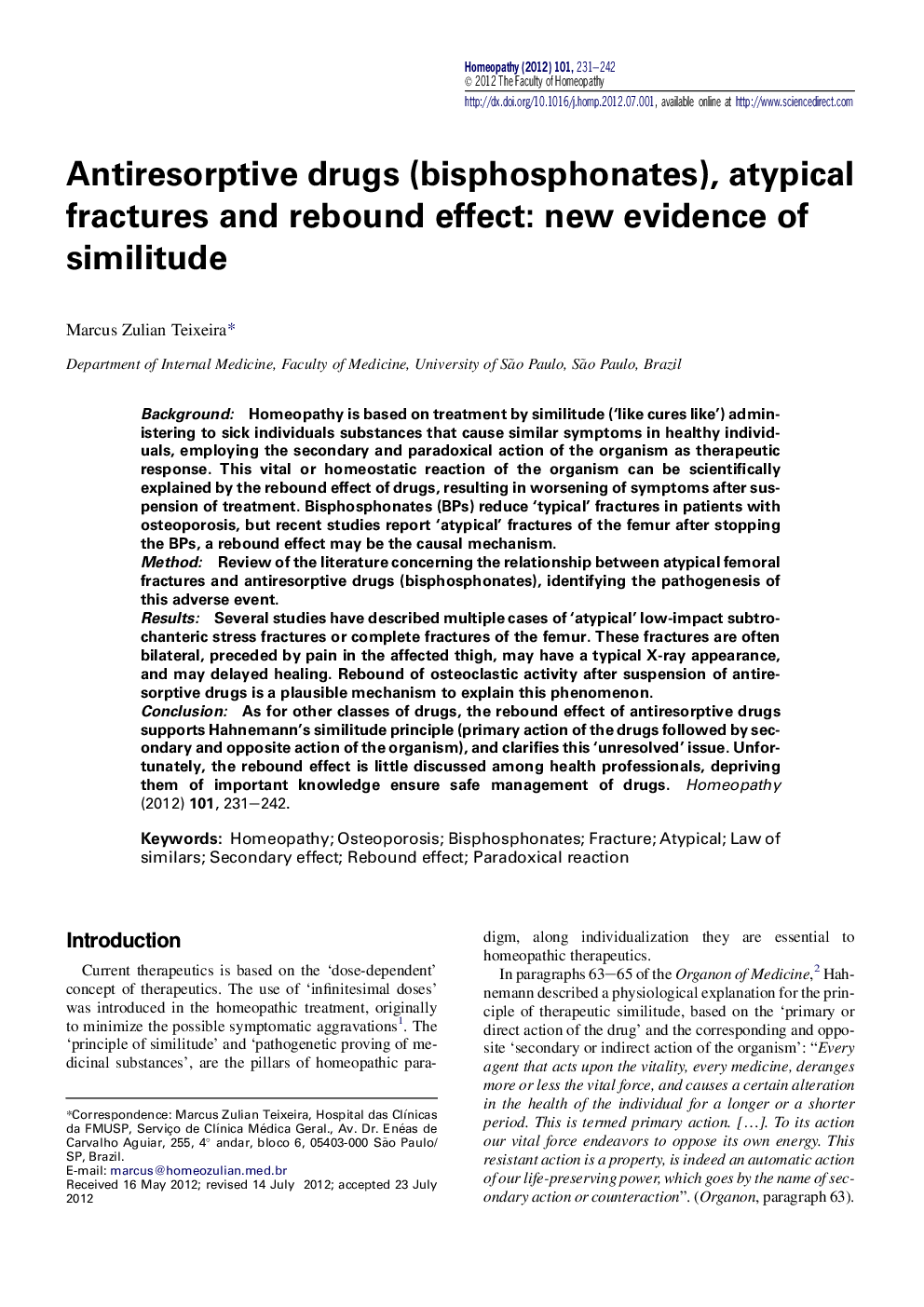| Article ID | Journal | Published Year | Pages | File Type |
|---|---|---|---|---|
| 2630039 | Homeopathy | 2012 | 12 Pages |
BackgroundHomeopathy is based on treatment by similitude (‘like cures like’) administering to sick individuals substances that cause similar symptoms in healthy individuals, employing the secondary and paradoxical action of the organism as therapeutic response. This vital or homeostatic reaction of the organism can be scientifically explained by the rebound effect of drugs, resulting in worsening of symptoms after suspension of treatment. Bisphosphonates (BPs) reduce ‘typical’ fractures in patients with osteoporosis, but recent studies report ‘atypical’ fractures of the femur after stopping the BPs, a rebound effect may be the causal mechanism.MethodReview of the literature concerning the relationship between atypical femoral fractures and antiresorptive drugs (bisphosphonates), identifying the pathogenesis of this adverse event.ResultsSeveral studies have described multiple cases of ‘atypical’ low-impact subtrochanteric stress fractures or complete fractures of the femur. These fractures are often bilateral, preceded by pain in the affected thigh, may have a typical X-ray appearance, and may delayed healing. Rebound of osteoclastic activity after suspension of antiresorptive drugs is a plausible mechanism to explain this phenomenon.ConclusionAs for other classes of drugs, the rebound effect of antiresorptive drugs supports Hahnemann's similitude principle (primary action of the drugs followed by secondary and opposite action of the organism), and clarifies this ‘unresolved’ issue. Unfortunately, the rebound effect is little discussed among health professionals, depriving them of important knowledge ensure safe management of drugs.
